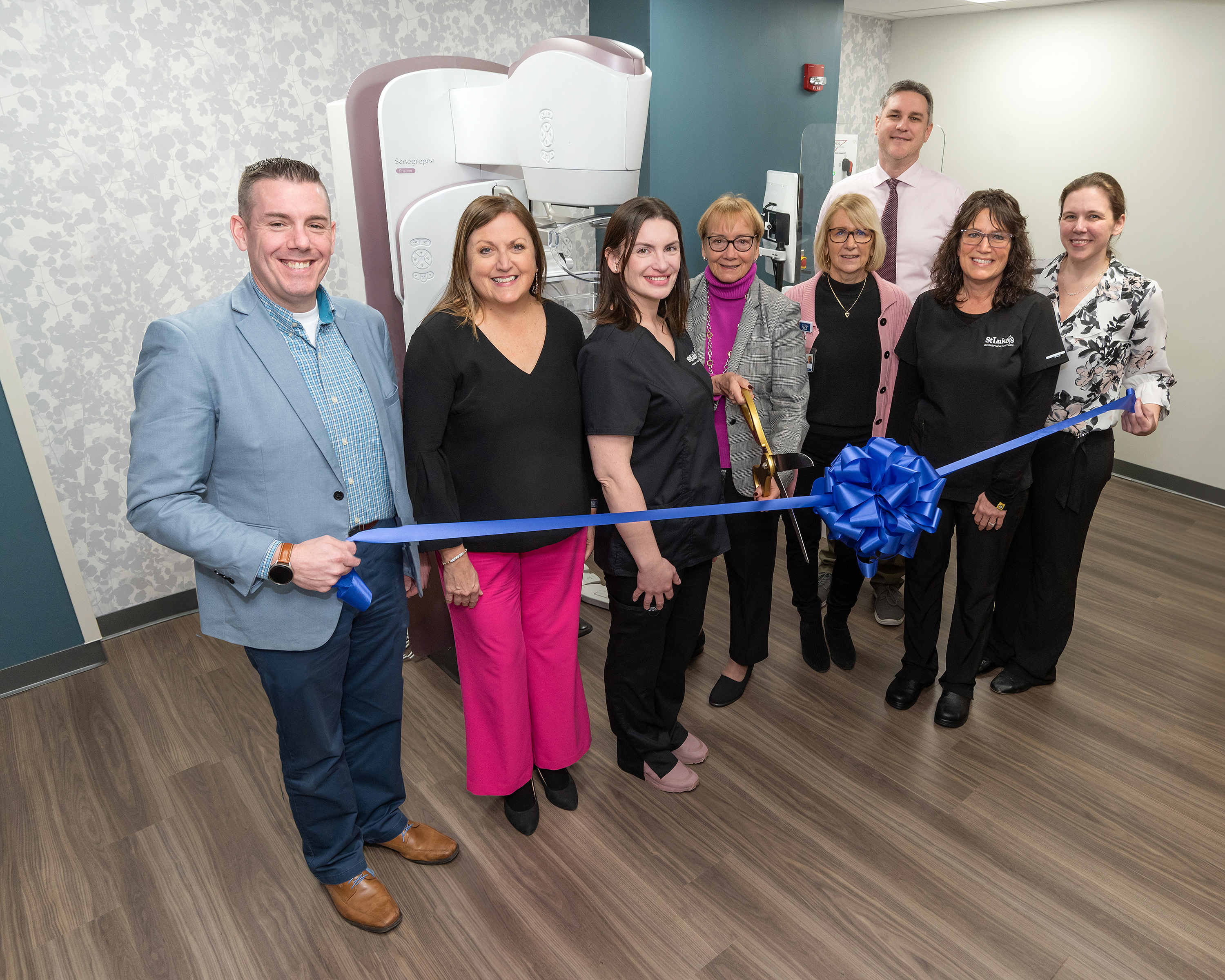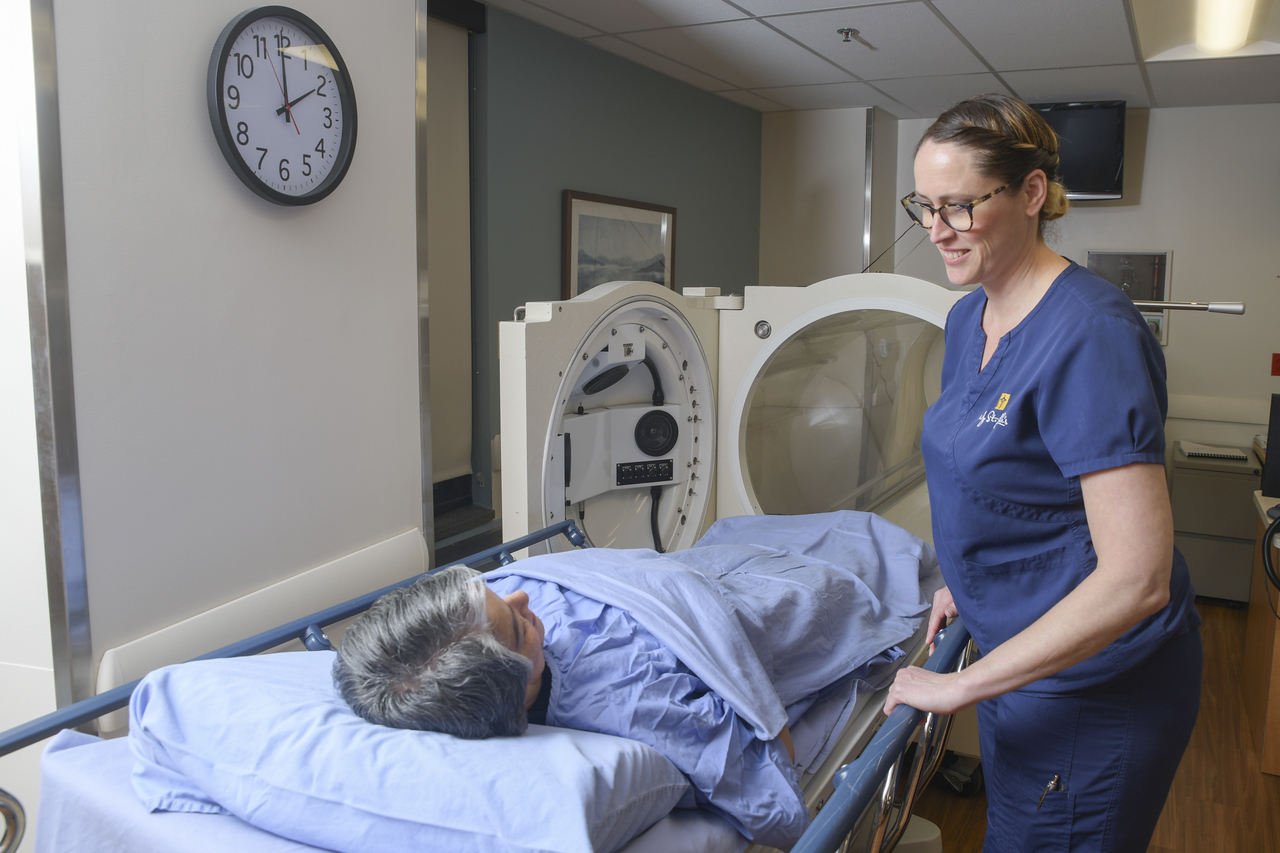Blog
In traditional breast cancer lumpectomies, a small incision is made in the breast, the malignant tumor is removed, the incision is closed, and the patient goes home — with six weeks of radiation therapy ahead of her. But with new technology acquired by St. Luke’s University Health Network, one more step in the operating room spares some patients those weeks of therapy.
Immediately following tumor removal, clamps retract the skin surrounding the lumpectomy site. A spherical applicator tip, ranging from 1.5–5 centimeters in diameter and mounted on a cone-shaped applicator shank, is inserted in the lumpectomy cavity, contacting all surfaces of the treatment area.
The applicator shank is mounted on a mobile arm, which attaches to a machine that generates an X-ray beam emitted from the sphere internally. Low-energy, high-dose X-rays directing up to 50 kV of energy to the target tissue deliver a precise dose where it is needed most — in the location where recurrence is most likely — uniformly irradiating the tissue to a depth of about 1–2 centimeters. After about 30 minutes, the applicator is removed and the surgeon closes the incision.
This is intraoperative radiation therapy (IORT), a full course of radiation treatment that, because it is delivered to the tumor site immediately following surgery, saves the patient from having to undergo the typical six weeks of radiation therapy. Results of a large, international study show treating early-stage breast cancer patients with IORT is statistically equivalent in local recurrence rates to a six-week course of whole-breast radiotherapy.
“I went into cancer surgery so I could look a patient in the eye and say, ‘As far as I can tell, we got it all,’” says Lee B. Riley , M.D., Ph.D., FACS, Chief of Surgical Oncology and Medical Director of Oncology Services at St. Luke’s University Health Network. “Imagine being able to walk out after surgery and say, ‘We got it all, and you’re done with your radiation therapy.’ Knowing we just saved them six weeks of going back for radiation therapy — there’s no price for that.”
St. Luke’s University Health Network is the first health care provider in Pennsylvania and one of only about 50 sites in the country to acquire Intrabeam IORT technology. Dr. Riley has been following the progress of the TARGIT trial, the largest and most comprehensive study of IORT, for more than five years. When results of the 2,000-patient study were published in The Lancet in June 2010 and followed up with updated results at the San Antonio Breast Symposium in December 2012, he was persuaded.
“We’re moving to give less and less radiation to the breast,” Dr. Riley says. “Putting a device inside the lumpectomy site made sense, and it just made so much sense to do it while the patient was under anesthesia.”
The usual six weeks of radiation therapy after a lumpectomy can be challenging for women who have busy schedules or who do not have access to a center offering radiation. In some cases, the demanding therapy schedule causes women not to comply with the recommended course of treatment, increasing their risk of cancer recurrence.
External beam therapy also exposes the healthy tissue of the breast, while IORT spares surrounding tissue that may not benefit from additional radiation, says Tricia A. Kelly , M.D., FACS, a breast surgical oncologist at St. Luke’s University Health Network.
“It’s quite an advancement of technology,” Dr. Kelly says. “When we look at breast cancer recurrence, a majority of those recurrences are at or very close to the lumpectomy site. Therefore, the premise is that we can radiate the at-risk tissue, sparing unnecessary side effects from radiating the remaining breast tissue.”
Among the most common side effects of radiation is erythema, or reddening and irritation of the skin, which IORT minimizes by decreasing exposure of the breast.
Along with her colleagues, Nimisha Deb, M.D., Chief of Radiation Oncology at St. Luke’s University Health Network, has been following the progress of the TARGIT study.
“We’ve been interested for some time because we have a multidisciplinary approach to the major cancer sites, and we wanted to be able to offer full therapeutic modalities in terms of radiation therapy,” Dr. Deb says. “With a variety of treatments available for early stage patients we now can personalize treatments with a range of radiation options based on tumor characteristics and patient convenience. IORT used alone or as a boost adds to our repertoire. We feel this is on the cutting edge because the results of the TARGIT trial are maturing now.”
Dr. Deb foresees a growing number of women with early-stage breast cancer benefiting from the therapy.
“With our improved diagnostic mammograms and greater public awareness, luckily we’re detecting cancers at an earlier stage,” Dr. Deb says. “That’s important in the sense that if a patient is diagnosed early, she has the potential option of getting a lumpectomy and IORT, finishing her treatment at the time of surgery, and not having to come back.”
Dr. Riley says about 70% of breast cancer patients at St. Luke’s University Health Network have lumpectomies, but not every patient is a candidate for IORT. How long the disease has progressed and what kind of cancer is diagnosed are determining factors. However, even for lumpectomy patients who must undergo traditional radiation therapy, physicians can give a “boost” of IORT to target sites where residual cancer cells may remain and reduce the length of radiation treatment by a week or more.
But for many breast cancer patients at St. Luke’s University Health Network, IORT will mean a decidedly easier course of treatment.
“If your wife got breast cancer, wouldn’t you want the physician to be able to perform surgery and tell her when she wakes up, ‘We took your tumor out, and you’re finished with your radiation therapy’?” Dr. Riley says. “IORT is indicated for early-stage breast cancer, but for that group of women, imagine the overall quality-of-life improvement of not having to go to a radiation facility for six weeks. I think that’s huge.”
For more information on the cancer services of St. Luke’s University Health Network, visit www.slhn.org.








